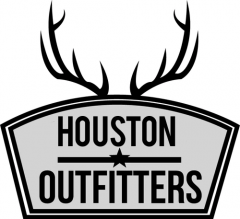QDM Practices Yield Deer Hunting Success
Landowners and whitetail deer hunters in Texas become game managers when they follow Quality Deer Management practices.
According to the Quality Deer Management Association, “This level of deer management involves the production of quality deer (bucks, does, and fawns), quality habitat, quality hunting experiences, and, most importantly, quality hunters.”
Feedlots Help the Herd Survive and Grow
Putting down feed or planting a feedlot ensures the survival and improved health of a deer herd. In addition, the placement of a feedlot will help determine the movements of deer during the hunting season. Landowners can improve the likelihood of harvesting trophy bucks on their properties by providing plenty of food during the winter months. Several manufacturers offer specialized forage seed as well as mineral supplements which can be applied over corn or other grain.
Yearling Bucks Disperse to Neighboring Ranges.
Young male deer, born in early summer, may remain with the doe herd until the following summer. At that time, they will usually be rejected by the doe herd. Only small, non-breeding males occasionally remain. Faced with competition from the does and mature males for food and cover, the yearling bucks will leave their home range. The following autumn rut will pit these young, marginal breeders against mature bucks. The youngsters will travel for miles in search of new territory. Once a young buck establishes a new range, he is likely to remain there. As a result, the number and quality of bucks in a given range depends largely upon the degree to which that range is attractive to transient bucks.
Harvesting Does Create Better Hunting
Harvesting the older age group does diminish the competition for food and cover while increasing the competition among bucks for finding a mate. Transient bucks are more likely to establish themselves in the range and respond more readily to rattling and scenting. At one time, it made sense to protect does, since the overall goal was to increase the wild deer population. Presently, the population level allows for shooting does without endangering herd population levels.
Protecting Young Males Results in More Trophy Bucks
When hunters pass on the one or two-year-old bucks that come within a gun or bow range, they increase the likelihood of shooting a deer with a big basket rack in the future. However, shooting some younger bucks that do not show promise of becoming trophy individuals will result in great hunting in future years. Keeping in mind the tendency of young bucks to remain in their new range following initial dispersals, quality deer management practices, such as winter feeding and selective harvesting will grow big bucks while they improve the herd.
